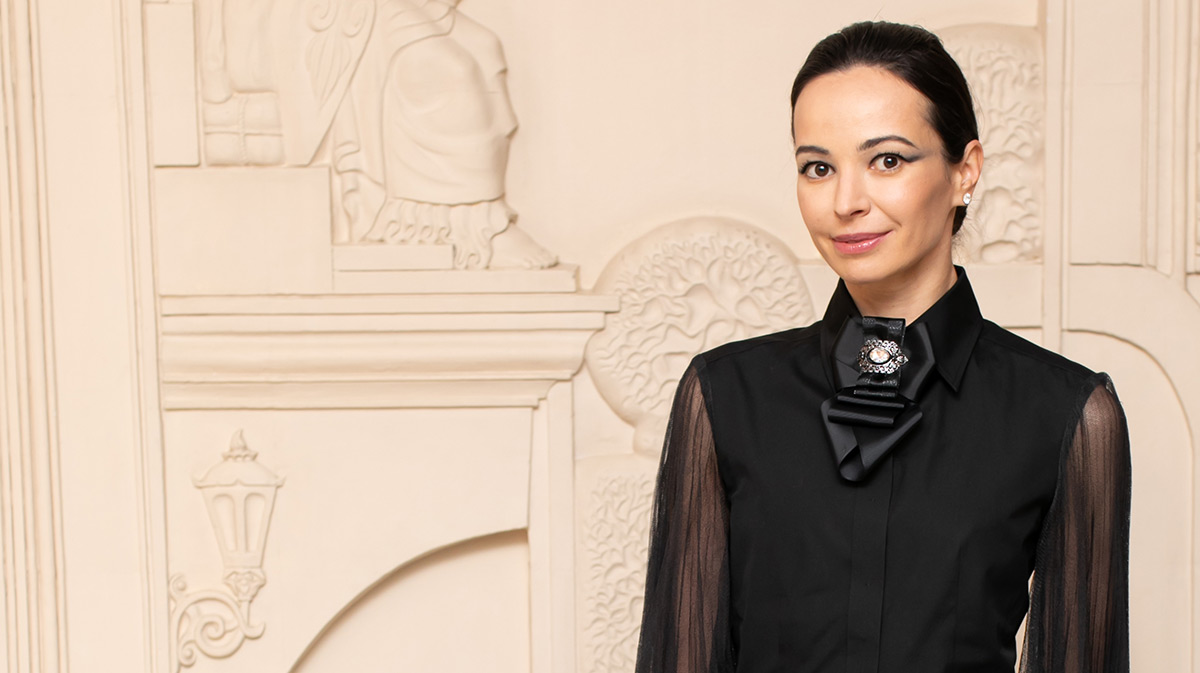
© Vitaly Kolikov. (Click image for larger version)
contextfest.com
dianavishneva.com
The pandemic hasn’t diminished the artistic drive and creativity of international ballet superstar Diana Vishneva. Even in the time of COVID-19, the prima ballerina of the Mariinsky Theatre and founder and artistic director of the contemporary choreography festival “Context,” Vishneva finds herself on a perpetual quest to explore and expand the context of what she sees as dance.
Last fall, her festival (thanks to its new digital platform) was one of the rare highlights in the mostly dormant world of dance, which saw nearly all live performances cancelled or postponed due to the pandemic.
Recently, Vishneva unveiled a new work – a multi-media project Imprint in Motion (“Слепок” in Russian), which was made specifically for film and premiered in limited release on March 31, in Moscow and on April 7, in St. Petersburg and will be subsequently screened in more than 30 Russian cities.
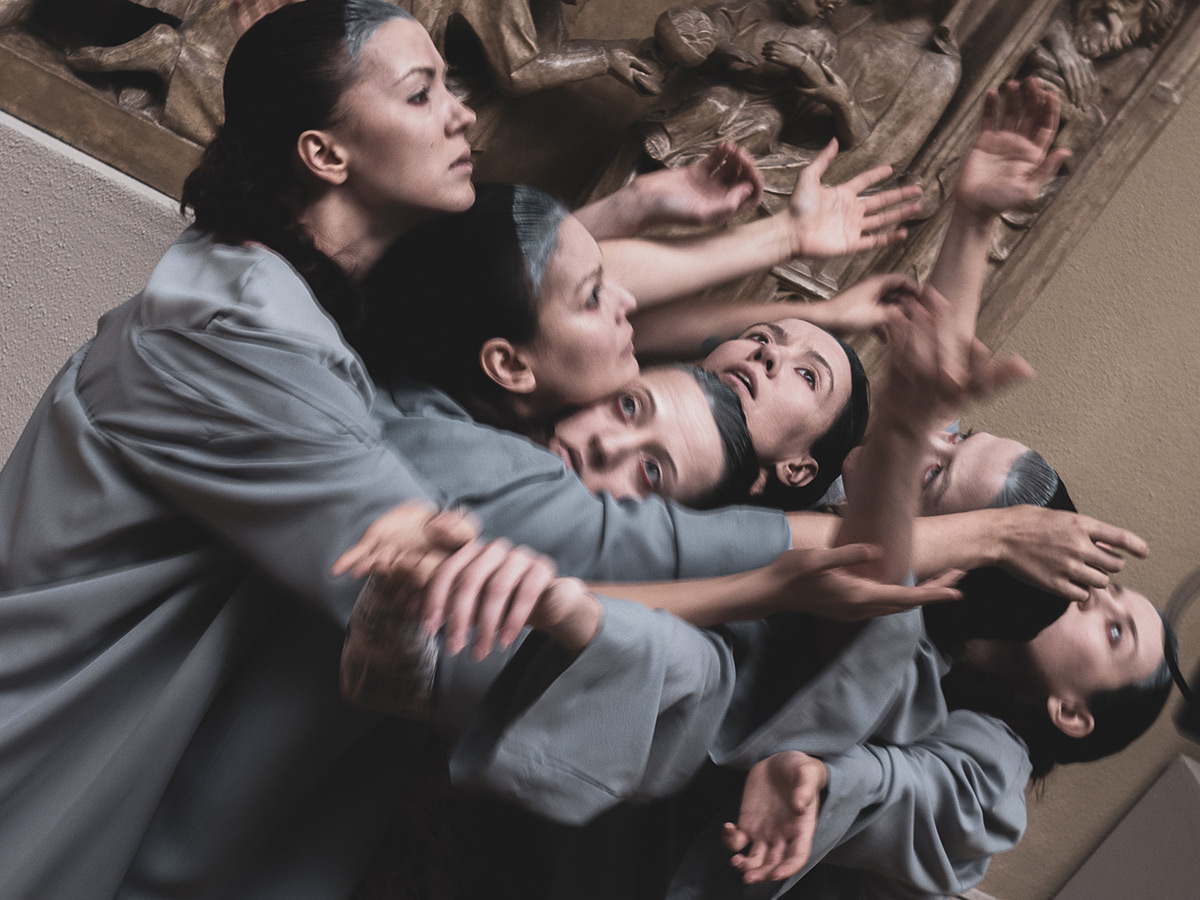
© Context. Diana Vishneva, Andrei Silvestrov. (Click image for larger version)
An amalgam of dance, music, video, and fine arts, Imprint in Motion was created and filmed during the lockdown in the halls of Moscow’s Pushkin Museum of Fine Arts. It’s a collaborative effort of the team behind the “Context. Diana Vishneva” festival, Aksenov Family Foundation, and the Pushkin Museum. The result is a fascinating journey in the history of Western European culture, expressed through movement and music, which showcases the vast arts collection of the museum in a new light.
Directed by Andrei Silvestrov, the film has five distinctive parts and unfolds as a museum tour, exploring the five different historical epochs from Antiquity to the Renaissance. For this project, five young composers were commissioned to write the music; and five choreographers – Konstantin Semyonov, Andrey Korolenko, Lilia Burdinskaya, Alexander Frolov, and Anna Schekleina, who are finalists of “Context” choreography competitions – were invited to create dance-miniatures to convey their ideas about the art of a given period and its meaning and significance for us today.
Oksana Khadarina interviewed Diana Vishneva to find out more about this project and the inspiration behind it.
How did the idea for Imprint in Motion come about and how long did it take to make?
During the first wave of the pandemic, the team of my foundation {the Diana Vishneva Foundation} and I were looking for alternative projects to replace those cancelled because of COVID-19. We wanted to continue to move forward and stay creative, and we were looking for different ways to bring dance into new performance spaces.

© Context. Diana Vishneva, Andrei Silvestrov. (Click image for larger version)
Our goal was to connect and collaborate with our institutional partners to persevere and survive in this crisis together. We connected with the Aksenov Family Foundation (AFF) with a proposal for a joint project: to bring together the choreographers of the “Context” festival and the composers of AFF. The Pushkin Museum of Fine Arts was our joint partner. So, it all came together.
Because of the pandemic, our dancers lost access to the stage and the theater; and the museums, in turn, lost their visitors. So we came up with the idea of creating and filming a dance performance in the empty halls of the Pushkin Museum. The whole process of working on Imprint in Motion from the initial idea to the realization has taken five months – from April to September 2020.
What were the challenges of working on this project, and what were the rewards?
This project was a new territory for all of us. Our film director, Andrei Silvestrov, who has previously collaborated with the museum on several occasions, never worked with dance before; and our five choreographers had no experience of creating a dance specifically for film.
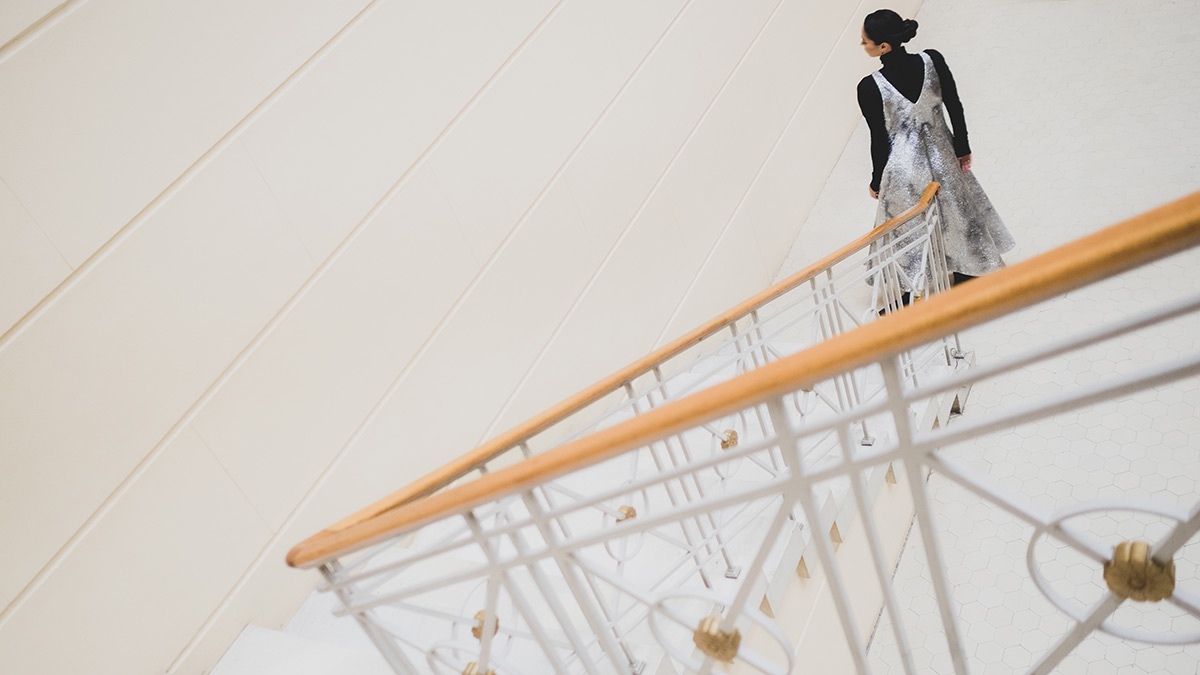
© Context. Diana Vishneva, Andrei Silvestrov. (Click image for larger version)
We are living in a special time, where the pandemic, by isolating us, has really united us. I don’t know if we would have created such a project if we didn’t live through the COVID-19 crisis. I am glad that we used this opportunity and, together with AAF and the Pushkin Museum, created something new that has inspired and enriched us all.
Working on this film elevated the team of my “Context” festival to a new professional level: we created a new project from scratch, working not only as co-creators, but also producers. And, I am certain, seeing the collection of arts of the Pushkin Museum through the movement and plasticity of the human body will be a new experience for the audience.
Tell us about the choreographers and their experience of working on this film.
The five choreographers are the past finalists of the Young Choreographers Competition of the “Context” festival. Each of them has a distinctive movement style. They have their own understanding of dance, music, museum space and their own perception of the chosen historical era. In the film, everything reflects their personal, largely subjective view.
The uniqueness of the project is that it has brought together creative people of different generations, different ages, and different experiences: professional, emotional, and spiritual. Therefore, the film has become in many ways a creative experiment for all of us.
What did you want to reflect in this film?
This project was born within the walls of a museum not by accident. Today, in the conditions of a new reality, we all ask ourselves the question: will we return to our “old” life? And what will happen next?
Today we understand that art and theater – and their dialogue with the audience – is changing. The processes of merging the arts with technology is accelerating, giving rise to new artistic tools and techniques.
Imprint in Motion is a memory of history that helps us to see and feel the present and to discover the future. Isadora Duncan said: “The dance of the future is the dance of the past.” And this is relevant and can be said about all arts in general.

© Context. Diana Vishneva, Andrei Silvestrov. (Click image for larger version)
How can you describe your role/your heroine in this film?
The image – and meaning – of my heroine is multifaceted. Everyone will interpret it in their own way. For some, I will become Time, for others, Memory.
I see my heroine like a guide between historical eras, connecting the past with the present day, connecting different artistic genres and styles.
In the film, we wanted to reflect the idea of the human body in a variety of plastic forms. We wanted to show how the human body – frozen in sculptures or moving in dance – reimagines the way we view and tell the history of Western European culture.
What were the most memorable moments for you in working on Imprint in Motion?
I had never been in an empty museum before. And for me, this was already an artistic act in itself – and even an existential experience. I remember my unusual feeling while I was walking through the deserted museum halls, left alone with sculptures: heroes and faces and memories of the past. I felt like I was transported back in time.

© Aleksandr Murashkin. (Click image for larger version)
Walking around the Pushkin Museum, I would remember my childhood, when I, still a student of the Vaganova Academy in St. Petersburg, tried to visit the Hermitage Museum at every opportunity. There I observed and learned from ancient sculptures the nature of gesture and posture. Even though it seems like every sculpture “poses,” there is no artifice or pretense in it. In ancient sculptures, I think, the dance is forever captured as it was at its origins – truthfully and naturally.
What do you think the viewers will take away from watching the film?
For me, it would be a confirmation that our film touched the viewers if Imprint in Motion made audiences think and reflect on what they had seen, so that they themselves could answer the question of what, in their understanding, this film is about. Did they see the museum from a new perspective? Did they see the dance in a new light?







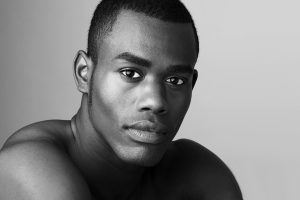








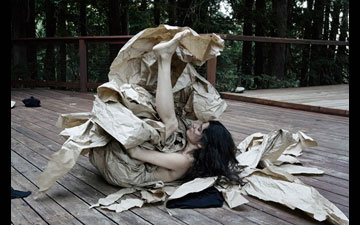
You must be logged in to post a comment.